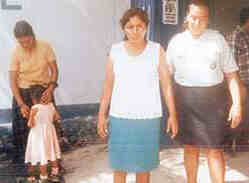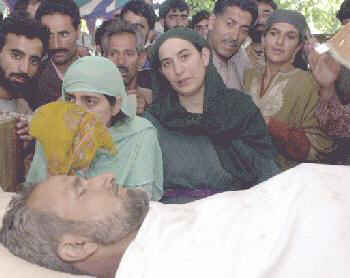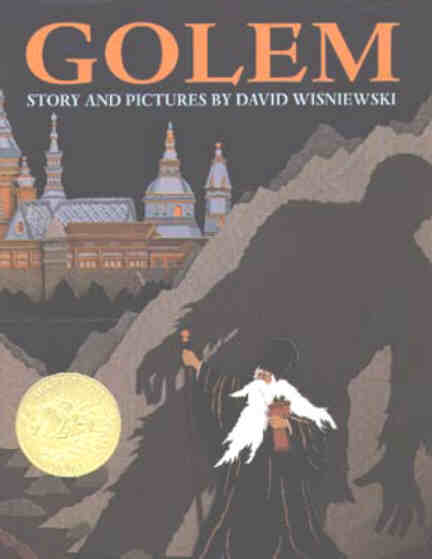1893 The Parliament of World
Religions opens ^top^
The World's Columbian Exposition,
held in Chicago in honor of the 400th year of Columbus' voyage
to the New World, was not just a big trade fair. It also called
together a conference of world religious leaders. Its inspiration
lay in the suggestion of a Swedenborgian, Charles C. Bonney.
John Henry Barrows, one of Chicago's most liberal clergymen,
promoted the event. He claimed later that he had hoped leaders
of world religions would be convinced of the superiority of
Christianity.
Many Christians such as D. L.
Moody refused to participate. Most Protestant evangelicals agreed
with the response of the Archbishop of Canterbury that to participate
was to presuppose the equality of religions. Salvation is in
Christ alone, they protested. Nonetheless, the Roman Catholic
Church sent delegates and as did some liberal Protestant denominations.
Christian representation was therefore decidedly outside the
US mainstream. Other representation included a dozen Buddhists,
eight Hindus, 2 Shintoists, a Jain, a Taoist, a couple of Muslims,
Confucians and Zoroastrians.
The Parliament produced just
about the results that evangelicals anticipated. The speeches
were largely anti-Christian and denounced Christian missions
as un-Christian. To many people, Christianity began to seem
just one among many equal traditions. Some began to question
if Asian faiths were not legitimate alternatives to Christianity.
Many decided they were. Great interest was generated in Buddhism
and Hinduism. Swami Vivekananda of the Hindu tradition and Anagarika
Dharmapala of the Buddhists toured the United States. The outcome
was a Vedanta Society and a Buddhist society. D. T. Suzuki,
a Buddhist, was dispatched to the United States by another attendee
of the conference where he translated works into English and
established a Zen presence, including the US's first Zen monasteries.
Many other Eastern gurus, seeing
ripe fields, have since set up shop in the United States and
Americans have increasingly turned from traditional Christianity
to home-made cults, many of which include motifs from Eastern
religions. As a consequence of this new exposure, Americans
have became more amenable to the idea of religious pluralism.
And since the Columbian Exposition, Eastern religions and their
symbols have increasingly infiltrated American thought, not
least in the fields of science fiction and fantasy. Such growing
influence reminds us of the pivotal question that goes to the
heart of the Christian faith as to whether Jesus Christ is the
way, the truth and the life and no one comes to the Father but
by him, as is stated in John 14. |
1889 Start of the Sherlock Holmes Memoir The
Crooked Man
1881 Triple landslides bury Elm, Switzerland.
1875 1st newspaper cartoon strip
1864 Evacuation of Atlanta, Georgia, by civilians is made possible
by a 10-day truce between generals Sherman and Hood. — David Humprey
Blair, 23, of the 45th Ohio Volunteers, writes in his
diary: “Atlanta and Mobeal are taken and very likly by this
time Richmond. but still the war goes on and we still have a reble force
in our front to watch and contend with. As McCellen said to Burnside
on returning from Richmond in 62 "I am hanged if the tail of the reptile
don't squirm yet" But this war will end some time & if the copperheads
dont hinder that must be soon.”
1861 Campaign of Cheat Mountain, Virginia (now West Virginia)
begins
1853 1st electric telegraph in use, Merchant's Exchange to Pt
Lobos
1841 Tyler's cabinet resigns
over bank issue ^top^
With his unusual platform of
states' rights zeal and pro-Constitutional fervor, President
John Tyler, known to some as "his accidency," had always wavered
between Whig and Democrat policies. The ideological vacillation
finally took its toll on 11 September 1841, when all the members
of his cabinet, except for Secretary of State Daniel Webster,
resigned over Tyler's decision to veto a Whig-sponsored bank
bill. Disagreement over the bank issue had been building throughout
the summer. In late July, Tyler vetoed an initial version of
the legislation, which he deemed unconstitutional due to its
mandate for state bank offices. Undaunted, Congress revised
the legislation, most notably by making the adoption of state
offices a matter of consent rather compulsion. Though the bill
was built to appease the President, Tyler nonetheless struck
it down. Along with his staff, Tyler lost much of his remaining
political credibility. The state-centric Whigs, who had supported
his rise to the Oval Office, summarily dumped the President
from their party. |
1814 Battle of Plattsburg Bay:
US defeats British on Lake Champlain, Vermont ^top^
A newly built US fleet under Master
Commandant Thomas Macdonough destroyed a British squadron, forcing
the British to abandon their siege of the US fort at Plattsburg
and retreat to Canada on foot. The US victory, coupled with
the end of the British war against Napoleon — a major cause
of the War of 1812 — led to the conclusion of peace negotiations
in Ghent, Belgium.
On 18 June 1812, President James
Madison had signed Congress' declaration of war against Britain
into law, and the War of 1812 began. The war declaration, opposed
by a sizable minority in Congress, had been called in response
to the British economic blockade of France, the induction of
American seaman into the British Royal Navy against their will,
and the British support of hostile Indian tribes along the Great
Lakes frontier. A faction of Congress, known as the "War Hawks,"
had been advocating war with Britain for several years, and
had not hidden their hopes that a US invasion of Canada might
result in significant territorial land gains for the United
States.
In the months after President
Madison proclaimed the state of war to be in effect, American
forces launched a three-point invasion of Canada, all of which
were decisively unsuccessful. In 1814, with Napoléon
Bonaparte's French Empire collapsing, the British were able
to allocate more military resources to the American war, and
in August, Washington DC, fell to the British troops, who burned
the White House, the Capitol, and other buildings in retaliation
for the earlier burning of government buildings in Canada by
US soldiers.
However, in September, Thomas
Macdonough's American naval force wins an impressive victory
at the Battle of Plattsburg Bay on Lake Champlain, forcing the
invading British army to retreat into Canada. The US victory,
and the fact that Napoleon's defeat had nullified the problem
of US neutrality, led to the conclusion of peace negotiations
in Ghent, Belgium. On 24 December 1814, the Treaty of Ghent
was signed, formally ending the War of 1812. By the terms of
the agreement, all conquered territory was to be returned and
a commission would be established to settle the boundary of
the US and Canada. However, British forces assailing the Gulf
coast were not informed of the treaty in time, and on 08 January
1815, the US forces under Andrew Jackson achieved the greatest
US victory of the war at the Battle of New Orleans. The US public
heard of Jackson's great victory and the Treaty of Ghent at
approximately the same time, fostering a greater sentiment of
self-confidence and shared identity throughout the young republic.
|
1802 Piedmont is annexed by France.
1789 Hamilton, first US Treasury
Secretary ^top^
With the nation in need of a
strong financial leader, President George Washington asks stalwart
Federalist Alexander Hamilton to step in as the first secretary
of the treasury. The move came a week after the official founding
of the Treasury Department. Hamilton was Washington's aide-de-camp
during the US War of Independence, and was instrumental in the
formulation of the US Constitution. During Washington's administration,
Hamilton, with his support of strong federal government and
conservative property rights, often came into conflict with
Secretary of State Thomas Jefferson, a Democratic idealist who
favored states' rights. |
1786 The Convention of Annapolis opens with the aim of revising
the articles of confederation.
1777 Battle of Brandywine, Pennsylvania; 1777 General George
Washington and his troops are defeated by the British under General Sir
William Howe.
1773 Benjamin Franklin writes "There never was a good war or
a bad peace."
1766 Carlos III dispone la admisión de los indígenas americanos
en las comunidades religiosas y su aceptación para cargos civiles.
1714 Acabada la Guerra de Sucesión Española, las tropas de Felipe
V toman por asalto la ciudad de Barcelona, que seguía manteniendo su
oposición.
1709 Battle of Malplaquet: John Churchill, Duke of Marlborough,
with Dutch and Austrians allies, wins the bloodiest battle of the 18th
century at great cost, against the French..
1695 Battle of Zenta: Imperial troops under Eugene of Savoy defeat
the Turks at the Battle of Zenta.
1609 Henry Hudson discovers Manhattan island
1609 Felipe II decreta la expulsión de los moriscos de Valencia
y Castilla.
1297 Battle of Stirling Bridge: Scots under William Wallace defeat
the English.
0813 Sacre de Louis le Pieux. Charlemagne fait couronner sont
fils Louis le Pieux, qui est son troisième fils et qui est roi des Aquitains
depuis 781, est le seul héritier des dix-neuf enfants qu'il a eu avec
ses neuf épouses successives. Le sacre a lieu à Aix-la-Chapelle.
0506 Council of Agde in Southern France deals with many issues
including drunkeness in the clergy.
|
 On
an 11 September:
On
an 11 September:  Deaths
Deaths
